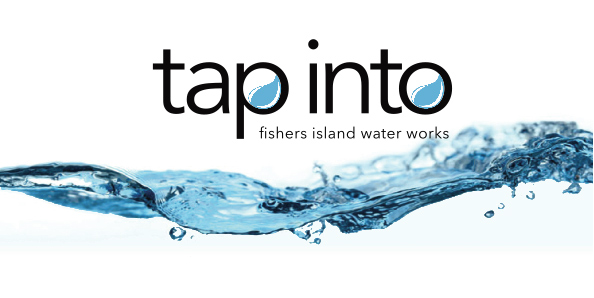FI Electric Corp.: Update on Electric Network Modernization
Fishers Island Electric Corporation
Update on Electric Network Modernization
November 29, 2022
By Tom Siebens, Director
AMI & Engineering Study
Fishers Island Electric Corporation plans to install automated metering infrastructure (“AMI”) over this coming winter. The 700 electric meters on the island will be replaced with new meters that will allow system-wide data collection, remotely, to monitor, analyze and more efficiently manage power flows.
The Company’s plans for the AMI system were recently approved by the New York State Public Service Commission after a petition process that took over a year.
AMI is an essential first step toward modernizing the island’s electric infrastructure. The AMI system will collect more accurate, real-time and extensive data on network use and performance and perform much more sophisticated analysis of that data than is possible with the existing old meters. The data gathering and analytical capabilities of AMI will enable the Company’s consulting engineers to develop a comprehensive master plan for renovating the infrastructure. A master plan will enable the Company to arrange financing for the modernization over time.
AMI will also help in day-to-day operations, enabling the Company to respond faster to problems and to regularly optimize the network’s efficiency. Customers with AMI meters will be able to access their usage data remotely through a customer portal and thereby better manage their own energy usage.
Challenges & Solutions
The island’s electric infrastructure has two major challenges. First, the electricity distribution network is inefficient and vulnerable due to aging components and because it operates with two transmission voltages. Second, the expected growth in demand for power on the island will likely exceed, within the foreseeable future, the capacity of the submarine cable that transmits the island’s power from Groton Long Point.
The master plan will help determine which parts of the infrastructure to replace first and how. It will also help planning for an additional submarine cable from Groton Long Point. This will add capacity to ensure that Fishers Island Electric can supply 100% of the island’s power needs far into the future.
The additional submarine cable will enable conversion of the island to a single voltage as well as a reduction in transmission losses over the four miles from Groton. It will include a fiber optic line, providing a more stable, durable and scalable broadband capacity than the present microwave link to the mainland.
Renewables
The engineering study will also help determine the best way to incorporate renewable energy, into the island’s energy mix. As an alternative source of power, a potential hedge against the cost of power from the New England grid, and as a mitigant to climate change, renewables must be part of long-term planning.
However, adapting and managing an electricity distribution network that is connected to customers with their own micro generation is technically more complex than operating an electric network with one source of power supply, as is currently the case for Fishers Island Electric. Fortunately, the New England grid, which supplies Groton Utilities, currently obtains more than 50% of its power from carbon neutral sources. It’s future power sources will include substantial amounts of offshore wind as it continues to de-carbonize.
Economics
The financing for installing the AMI will be spread out over time under the terms of a lease-to-buy financing. The cost of the engineering study and master plan will be covered by retained earnings. Over time, Fishers Island Electric will recover the costs of these investments through a system improvement charge to customers, as authorized by the Public Service Commission on September 16, 2022.
The costs of modernizing the infrastructure will be developed and budgeted as part of the master plan. Fishers Island Electric will then be in a position to plan infrastructure improvements comprehensively and cost-effectively.
In addition to financing new infrastructure, Fishers Island Electric faces the challenge of redesigning its rate structure in order to achieve three goals. First, the rate structure needs to ensure that the Company recovers its fixed operating costs. This is not possible under the current rate structure without the supplemental revenue from electrical contracting work done by the Company. The Company plans to file a rate case before the Public Service Commission to address the shortfall.
Second, the Company needs to maintain a rate structure that is fair to year-round residents since much of the of the infrastructure and associated operating costs are necessary mainly to service seasonal residents.
Third, if the Company is going to interconnect with customer-owned generation, the Public Service Commission will require first that a new tariff class is in place to ensure that those customers, while purchasing less commercial power, continue to pay their fair share of the fixed costs for the distribution network. Typically, such customers continue to rely on the network infrastructure for power when their own generation is insufficient to meet their full electric loads.
Designing a fair rate structure that ensures revenues on an economically sustainable basis for the utility, yet passes the scrutiny of the consumer-oriented Public Service Commission, is a significant undertaking. It involves analyzing power use patterns, projecting the costs of operating, modernizing and optimizing the electrical infrastructure, and forecasting demand for power over decades to come. This process will be set in motion with AMI data and a master engineering plan.
Designing a rate structure also involves conducting a rate study which Fishers Island Electric will be undertaking with the help of a rates consulting firm. The study will be the basis for eventually filing a case before the Public Service Commission seeking approval for a new, sustainable and fair rate structure.
* Fishers Island Electric Corporation is a New York corporation, regulated by the New York State Public Service Commission. It is managed and 51% owned by Fishers Island Utility Company, Inc. and 49% owned by Fishers Island Development Corporation.
Posted in: Bulletin Board, eFogHorn, Featured, FI News, Island Services, Utility Co
Leave a Comment (0) →









